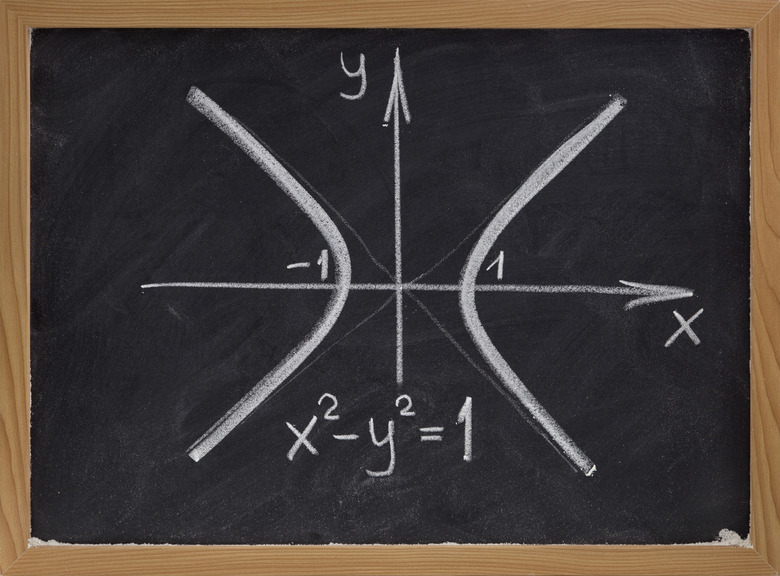How To Find The Inequalities From A Graph
When working with graphs in an Algebra II class, you may be presented with a graph of an equation and asked to identify the inequality displayed. The graph will consist of a dotted or solid line, with one side shaded. You can use clues from the graph, together with your knowledge of lines and linear relationships, to find an equation for the inequality.
Step 1
Check whether the inequality line is dotted or solid. If dotted, it is a less-than or greater-than inequality. If solid, it is a less-than-or-equal-to or greater-than-or-equal-to inequality.
Step 2
Identify two points on the line of the inequality. For example, suppose that the dotted line, has the points (0, 0) and (2, 1) on it. You will use these to calculate the inequality.
Step 3
Figure out the slope of the inequality line using the points on your inequality line. Use the formula m = (y2 – y1) / (x2 – x1), in which "m" is the slope and (x1, y1) and (x2, y2) are points on the line. In the example, m = (1 – 0) / (2 – 0) = 1/2.
Step 4
Plug your slope and a point into the formula y = mx + B, in which "m" is the slope, (x, y) is a point on the line and "b" is the y-intercept, to find the equation governing the inequality line. Plugging in (0, 0), you obtain 0 = 0 + b, so b = 0. Rewriting the equation, you obtain y = x/2.
Step 5
Determine, from looking at the shaded part of your graph, whether y is less than x/2 or greater than x/2. You may plug in a point from the shaded part of your graph. For example, suppose that the point (7, 8) is shaded. Because y, in this case, is greater than x/2 (8 > 3.5), your inequality is y > x/2.
Cite This Article
MLA
Lobo, Tricia. "How To Find The Inequalities From A Graph" sciencing.com, https://www.sciencing.com/inequalities-graph-8541604/. 24 April 2017.
APA
Lobo, Tricia. (2017, April 24). How To Find The Inequalities From A Graph. sciencing.com. Retrieved from https://www.sciencing.com/inequalities-graph-8541604/
Chicago
Lobo, Tricia. How To Find The Inequalities From A Graph last modified August 30, 2022. https://www.sciencing.com/inequalities-graph-8541604/
